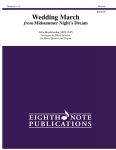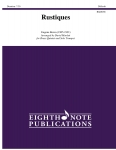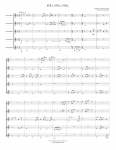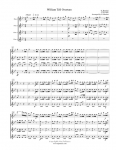The Renaissance Fair was commissioned to be a sequel to the composers' band work, Fanfare Ode & Festival. Meant for the top middle school band that commissioned it, The Renaissance Fair is appropriate for high school bands and technically gifted junior high bands. The splendid demonstration recording is by the University of Michigan Wind Ensemble conducted by H. Robert Reynolds.
The three-movement suite depicts a joyful gathering of royalty and peasantfolk for an entertainment of dancing and magic. Winds and brass are intended to imitate their antique counterparts. Percussion instruments are color infusers -- there for texture and sparkle.
The chirpingly regal first movement, ENTRY OF THE COURT, is the famous Courante (CLXXXIII) from Prætorius' Terpsichore of 1612. In this band setting the winds are arrayed in extreme registers -- high in the flutes and low in the contra clarinets -- for a brilliant and weightless 16th-century band sound. A subsequent shift to bass sounds adds weight and a ceremonial quality to the end of the movement.
The lilting second movement, SHEPHERDESSES' DANCE, is the well-know Basse Danse, "Bergerette sans roch," from Susato's Het derde musyck boexken (called Danserye) of 1551. This movement can be performed anywhere from moderately slow to moderately fast. Alternating choirs provide clear contrasts in texture, the brass especially being featured.
The speedy third movement, THE MAGICIANS, is the final dance on the last folio of Danserye, the relatively obscure Gaillarde (XV), "Le tout," an extraordinary romp of marked vivacity. Intricate percussion parts propel the music forward until an abrupt change of key and timbre sets our musical galaxy on tilt. Temple blocks herald an abrupt ending, the music hurls itself beyond the silence.
Bob Margolisgedruckt +55,00 EUR








